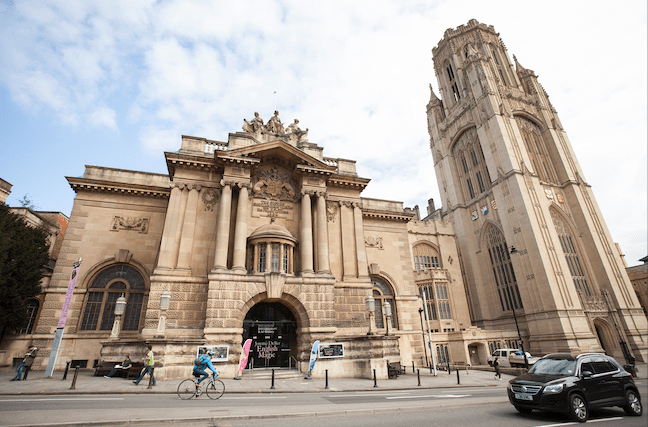By Kieran Hadfield
Arts Council England has today, Tuesday 15 September, published two new pieces of research that show the value of cultural organisations to our high streets - the Arts and Place Shaping: Evidence Review and a data report looking at the location and amenities provided by Arts Council England funded buildings. The research signals the important role these spaces will play in reanimating local economies as we emerge from the Covid-19 pandemic.
The first piece of research commissioned by Arts Council England, the Arts and Place Shaping: Evidence Review, points to a growing body of evidence that demonstrates culture’s role in revitalising the high street by promoting social cohesion and supporting local economies in towns, cities and villages up and down the country. Findings show that culture:
- Supports community cohesion – cultural organisations can help build civic pride and create an increased sense of belonging in communities.
- Increases footfall – libraries, theatres or museums can play a key role in hosting events and offering unique experiences that attract visitors to high streets.
- Helps repurpose vacant buildings – arts and cultural organisations are helping fill the gap left by retailers as they move away from high streets, repurposing vacant properties left by retailers into cultural spaces.
- Creates good jobs – culture-led regeneration and investment can drive local economic growth and help create employment.
Dr Darren Henley, Chief Executive, Arts Council England, said: “An investment in culture is an investment in our high streets. Theatres, music venues, museums and libraries are the beating hearts of their communities. They’re central to the social fabric and civic pride of towns across England. As well as events and performances for audiences of all ages, they provide a raft of local amenities from bars to bookshops, helping to bring our high streets alive, providing jobs and boosting the economy.”
Alongside this, a second report analysing experimental high street data by Ordnance Survey (OS) and a survey of Arts Council- funded cultural infrastructure across England shows that cultural buildings are located at the heart of our high streets:
- Culture has a strong presence on high streets – 75% of buildings used by Arts Council funded organisations are either on or within a 5-minute walk of a high street.
- Culture helps support local economies by creating jobs – over 300 cultural venues and buildings are located in unemployment hotspots.
- Cultural venues provide additional amenities for the public – nearly a quarter of cultural organisations have a café, bar or bookshop (or a combination of all three) onsite.
There are over 310 Arts Council funded cultural venues located on or within a 5-minute walk of high streets in the South West – attracting hundreds of thousands of visitors to the area per year and adding tens of millions of pounds to the local economy, including:
- John Hansard Gallery, Southampton – a contemporary visual art gallery and part of the University of Southampton. Since relocating to its new home in Southampton’s Cultural Quarter in the city centre in 2018, John Hansard Gallery has consistently attracted 100,000 visitors annually. They are currently working in partnership with Southampton City Council, GO! Southampton and Skate Southampton to reactivate forgotten spaces in the city, as well as commissioning artist Larry Achiampong to create a series of public artworks that will also help to encourage visitors back to the centre of Southampton after lockdown.
- Bristol Museum & Art Gallery, Bristol – Bristol’s foremost museum and visual art gallery with a wide range of collections including archaeology, geology, fossils and art. It holds over 1,300 paintings, 200 sculptures and 20,000 works on paper. The museum has been officially recognised as having some of the best collections in England through the Arts Council’s Designation Scheme – a mark of distinction that celebrates nationally and internationally significant collections. Bristol Museum & Art Gallery received over 450,000 visitors in 2018/19, bringing a footfall of almost half a million people to Park Street.
- Hall for Cornwall, Truro – a theatre in Truro bringing first-class productions to Cornwall including West End musicals, opera, ballet and music, as well as producing their own shows. Hall for Cornwall works with local schools and communities, artists and practitioners, to support the next generation of talent. They are currently undergoing a major Capital redevelopment, which has been delayed due to the Covid-19 pandemic. Hall for Cornwall have estimated that their reopening in 2021 will drive an estimated 300,000 people to the high street, bringing a huge economic benefit on Truro business.
Culture Secretary Oliver Dowden added: “These reports prove what we already know to be true, that culture is at the heart of our towns and cities. It creates jobs and makes our local communities across the country better places to live, work and visit. “That is why we are here for culture and investing an unprecedented £1.57 billion to ensure that these important institutions – both big and small – will be able to weather the storm of the coronavirus so the public can continue to enjoy them for years to come.”


